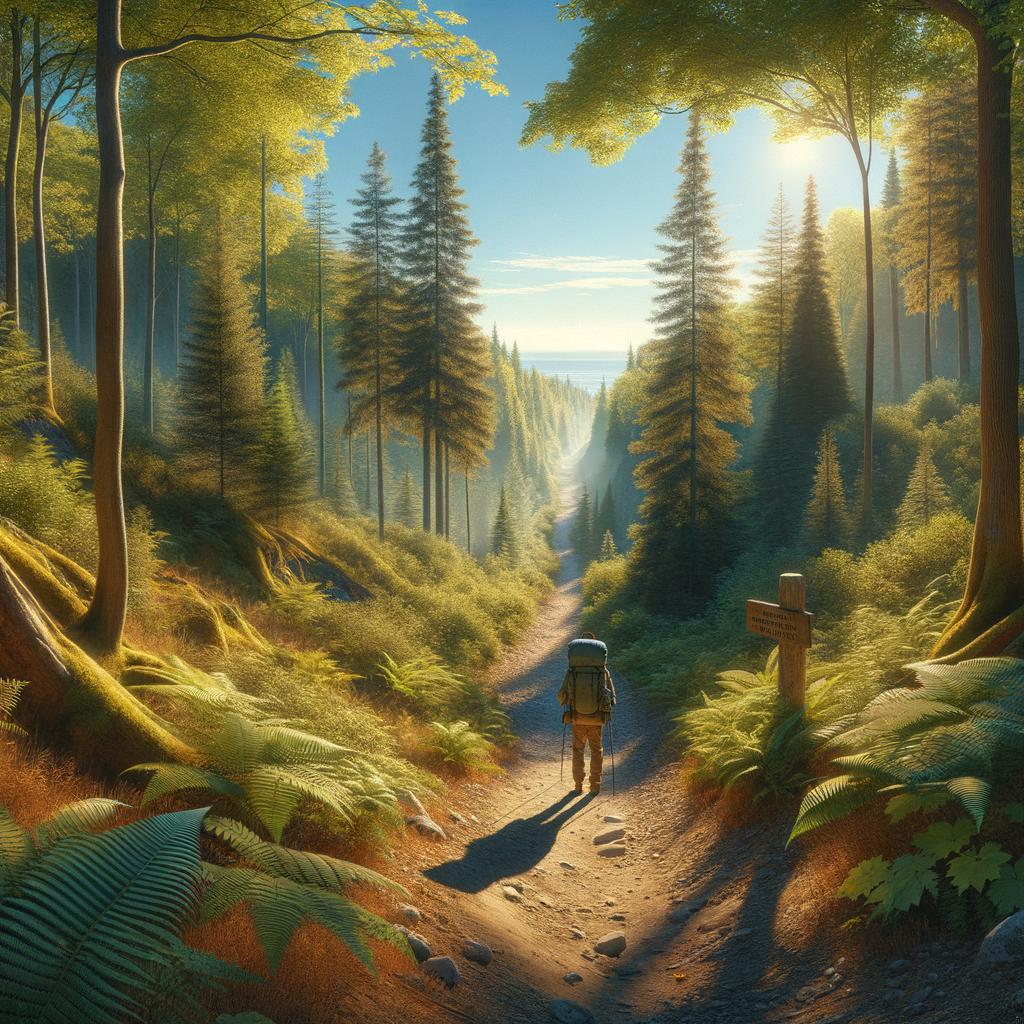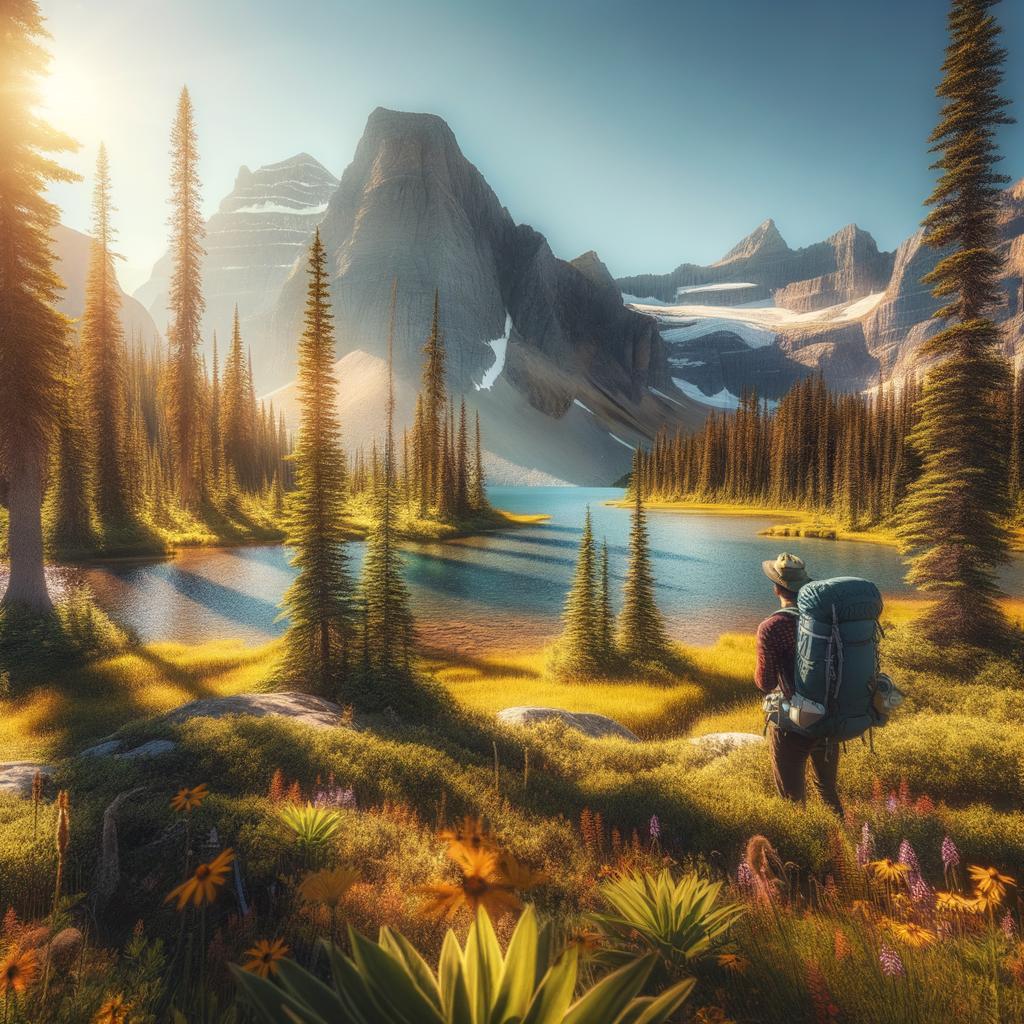'Backpacking the Bruce Trail: Ontario's Longest Marked Hiking Trail'
Posted on September 29, 2024 • 4 minutes • 808 words
Table of contents
Backpacking the Bruce Trail: Ontario’s Longest Marked Hiking Trail
Are you yearning for an unforgettable outdoor adventure that combines breathtaking natural beauty with the thrill of exploration? Look no further than the Bruce Trail, Ontario’s longest marked hiking trail. Stretching over 890 kilometers along the Niagara Escarpment, this iconic trail offers a diverse range of landscapes, from lush forests to stunning cliffs overlooking Lake Ontario. Whether you’re a seasoned backpacker or a novice hiker, embarking on a journey along the Bruce Trail is a rewarding experience that promises memories to last a lifetime. In this article, we’ll explore everything you need to know to make the most of your backpacking trip on the Bruce Trail.
What Makes the Bruce Trail Unique?
The Bruce Trail is not only the longest marked hiking trail in Ontario but also one of the oldest, established in 1960. This remarkable trail offers hikers a chance to experience the unique geology of the Niagara Escarpment, a UNESCO World Biosphere Reserve. As you trek along the trail, you’ll encounter breathtaking vistas, hidden waterfalls, and diverse wildlife, making each hike a unique adventure. The trail is divided into multiple sections, making it accessible for both day hikers and those looking to embark on longer backpacking trips.
Trail Sections and Difficulty Levels
The Bruce Trail is divided into nine sections, each offering its own unique landscapes and challenges. The most popular sections include:
The Niagara Section: This is the southernmost part of the trail, starting at Queenston Heights and ending at the town of Grimsby. Expect stunning views of the Niagara River, vineyards, and the famous Niagara Falls.
The Toronto Section: This urban section offers a blend of natural beauty and city life, making it a great option for those looking to escape the urban hustle without straying too far from civilization.
The Beaver Valley Section: Known for its rugged terrain and scenic vistas, this section is ideal for more experienced hikers looking for a challenge.
Each section of the Bruce Trail varies in difficulty, so it’s essential to choose the right section based on your skill level. Beginners may find the flatter segments more suitable, while experienced hikers can tackle the steep hills and rocky paths of the more challenging sections.
Essential Gear for Backpacking the Bruce Trail
When planning a backpacking trip on the Bruce Trail, packing the right gear is crucial to ensure a safe and enjoyable experience. Here’s a list of essential items to consider:
Backpack: A well-fitted, durable backpack is key for carrying your essentials comfortably.
Footwear: Invest in a pair of sturdy hiking boots with good ankle support and traction.
Clothing: Dress in layers to accommodate changing weather conditions. Opt for moisture-wicking fabrics and pack a waterproof jacket.
Navigation Tools: A map, compass, or GPS device will help you stay on track. The Bruce Trail is well-marked, but it’s always good to have a backup plan.
First Aid Kit: Accidents can happen, so it’s wise to have a basic first aid kit on hand.
Camp Gear: If you plan to camp along the trail, don’t forget your tent, sleeping bag, and cooking equipment.
Food and Water: Pack lightweight, high-energy snacks and ensure you have enough water for your hike. Portable water filters can also be handy for refilling.
Exploring the Flora and Fauna Along the Trail
One of the most enchanting aspects of hiking the Bruce Trail is the diverse ecosystem it supports. As you traverse the trail, you’ll encounter a variety of plant life, including towering hardwoods, wildflowers, and ferns. Wildlife enthusiasts will also delight in spotting deer, foxes, and numerous bird species. The trail is a paradise for nature lovers, so take your time to appreciate the sights and sounds around you.
Safety Tips and Best Practices
While backpacking the Bruce Trail can be an exhilarating experience, it’s essential to prioritize safety. Here are some tips to keep in mind:
Stay Hydrated: Bring enough water and take breaks to hydrate regularly.
Know Your Limits: Choose a hiking distance that suits your fitness level and experience.
Inform Someone: Always let someone know your hiking plans, including your starting point and estimated return time.
Leave No Trace: Respect the environment by following Leave No Trace principles. Pack out what you pack in.
Check Weather Conditions: Before heading out, always check the weather forecast. Be prepared for sudden changes in weather.
Conclusion: Adventure Awaits on the Bruce Trail
Backpacking the Bruce Trail is more than just a hiking experience; it’s an opportunity to immerse yourself in the natural beauty and rich biodiversity of Ontario. With its stunning landscapes, diverse wildlife, and well-marked paths, the Bruce Trail invites adventurers of all skill levels to explore its wonders. So grab your gear, lace up your boots, and set out on an unforgettable journey along Ontario’s longest marked hiking trail. Adventure awaits around every bend!



